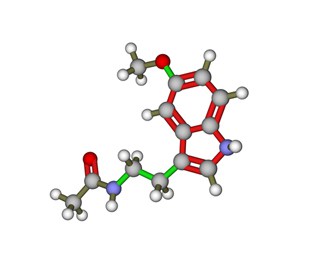Melatonin (Salivary) Testing Fact Sheet
Overview of the Test
Melatonin salivary tests analyze the activity of the hormone melatonin. Secreted by the pineal gland in the brain, melatonin regulates manufacture and release of many hormones and helps control circadian rhythm – the internal body clock that keeps to a 24-hour cycle. This body clock determines many factors, including when we fall sleep and when we wake up.
During the day when it is light, melatonin levels drop and as the day becomes dark, melatonin levels increase. Melatonin disruptions are common in those who work nights, those suffering from jetlag or even in those with limited vision. Melatonin disruptions are also common in depression, sleep disorders, the menopause and menstrual irregularities.
Evidence and Science behind the Test
Melatonin can act as a biological marker (biomarker) for circadian, or sleep dysfunction. Researchers have shown that melatonin levels alter in blood, urine and saliva when study subjects are exposure to altered bright light and darkness patterns as well as in those who work night shifts. When compared to other biomarkers such as temperature, melatonin levels remain robust and easy to measure.
How is it done?
It may be necessary to avoid specific foods and drinks before a melatonin test. It is important that the sample is taken at the time requested. For samples at home, rinse the mouth and chew sugar free gum for a couple of minutes to stimulate saliva flow. The sample can then be spat into the tube without touching the mouth of the tube. In a clinic, samples can be taken from the mouth with a plastic pipette and placed into a sample tube.
Who Does It?
Doctors, nurses and other qualified professionals. Home saliva testing kits are also available.
When and How Often?
Because melatonin activity works over 24 hours, samples may be necessary at various times such as morning, afternoon and late night. Some clinics may also request samples around 03:00, when melatonin concentrations are often at their highest. Women suffering with menstrual irregularities, or other hormone problems, may have to give samples at certain point of the menstrual cycle.
Cost
Home saliva tests are available from around $60 upwards. Through a clinic, it may cost considerably more.
Issues
As well as light and dark causing melatonin levels to alter, age, gender, health status, medications and diet can cause altered melatonin levels. This means that a number of samples may be required over time, or in a clinic, additional tests may be required to assist in diagnosis.
References
- Dana K. Mirick and Scott Davis. (2008). Melatonin as a Biomarker of Circadian Dysregulation. Cancer Epidemiol Biomarkers Prev December. 17; 3306
- Melatonin: http://www.umm.edu/altmed/articles/melatonin-000315.htm
- Burgess HJ, Fogg LF. (2008). Individual Differences in the Amount and Timing of Salivary Melatonin Secretion. PLoS ONE 3(8): e3055. doi:10.1371/journal.pone.0003055
- Katri Peuhkuri, Nora Sihvola and Riitta Korpela (2012). Dietary factors and fluctuating levels of Melatonin. Food & Nutrition Research 56: 17252
Last reviewed 26/Feb/2014
